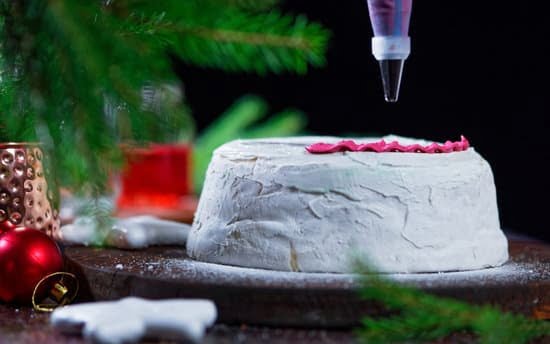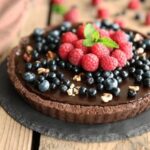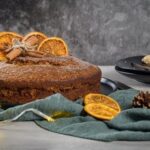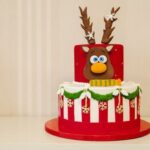Cake decorating tips are essential for creating beautiful and professional-looking cakes. Whether you’re a beginner or an experienced baker, mastering the art of cake decorating can take your baking skills to the next level. In this article, we will explore the world of cake decorating, from essential tools to advanced techniques, and provide valuable tips for creating stunning and delicious treats.
Cake decorating is not just about making a cake look pretty – it’s also about adding flavor and texture to your sweet creations. From simple buttercream designs to intricate fondant creations, there are endless possibilities when it comes to decorating cakes. Whether you’re preparing a cake for a special occasion or just want to impress your friends and family with your baking skills, learning the basics of cake decorating is a valuable skill for any home baker.
In this comprehensive guide, we will cover everything you need to know about cake decorating, including essential tools, choosing the right cake for decorating, basic and advanced techniques, troubleshooting common problems, using piping bags and tips, working with fondant and gum paste, as well as providing inspiration and ideas for your cake decorating projects. By the end of this article, you’ll be equipped with the knowledge and skills to create stunning cakes that taste as good as they look.
Essential Tools for Cake Decorating
Piping Bags and Tips
When it comes to cake decorating, one of the most essential tools is the piping bag and tips. These tools are used to create intricate designs, borders, flowers, and writing on cakes. When using a piping bag, it’s important to select the right tip for the design you want to create. For example, a round tip is great for creating borders and writing, while a star tip can be used to create rosettes and other decorative elements.
Offset Spatula
An offset spatula is another must-have tool for cake decorating. This long, flat tool is perfect for spreading icing evenly on the surface of the cake, as well as smoothing out any imperfections. It can also be used to lift and transfer delicate decorations onto the cake without damaging them.
Turntable
A turntable is an incredibly useful tool that allows decorators to easily spin the cake while working on it. This makes it easier to apply icing evenly and smoothly around the sides of the cake, as well as creating smooth surfaces for decorating. A good turntable can make a big difference in achieving professional-looking results.
In order to achieve beautiful and professional-looking cakes, having these essential tools for cake decorating is crucial. Whether you are a beginner or experienced decorator, investing in high-quality tools will help you create stunning cakes that are sure to impress your friends and family.
Choosing the Right Cake for Decorating
Understanding Different Types of Cakes
Before you can choose the right cake for decorating, it’s important to understand the different types of cakes available. From light and fluffy sponge cakes to rich and dense chocolate cakes, each type of cake has its own unique texture and flavor profile. Consider the purpose of your decorated cake – whether it’s for a special occasion or simply for personal enjoyment – as well as the preferences of those who will be enjoying it.
Moisture Level and Stability
When selecting a cake for decorating, consider its moisture level and stability. A moist and sturdy cake is essential for supporting intricate decorations while retaining its shape and structure. Avoid overly crumbly or dry cakes that may not hold up well under layers of frosting or fondant. A stable base will make it easier to work with various piping techniques and sculpted designs when decorating your cake.
Flavor Compatibility
In addition to texture and stability, consider the flavor compatibility of your chosen cake with the decorations you plan to use. For instance, a light vanilla sponge cake pairs well with fresh fruit fillings and delicate floral decorations, while a rich chocolate cake complements bold flavors such as caramel or nut-based fillings. Keep in mind that the flavors should harmonize rather than compete with one another, enhancing the overall taste experience for those enjoying your decorated creation.
By considering these factors when choosing a cake for decorating, you can ensure that your finished masterpiece not only looks stunning but also tastes delicious. Experiment with different types of cakes to find what works best for your preferred decorating techniques and personal style. With quality ingredients and careful selection, you’ll be on your way to creating beautifully decorated cakes that leave a lasting impression.
Basic Cake Decorating Techniques
When it comes to basic cake decorating techniques, there are a few key things to keep in mind to ensure your creations turn out beautifully. First and foremost, having the right tools is essential. From offset spatulas to piping bags and tips, having the proper equipment will make the decorating process much easier and more enjoyable.
One of the most basic cake decorating techniques is icing a smooth and even layer of frosting on the cake. This is often referred to as crumb coating, which helps seal in any loose crumbs before adding the final layer of frosting. Using an offset spatula or bench scraper can help achieve a smooth finish.
Another important basic technique is piping borders and simple designs onto the cake. This can be done using different piping tips to create various shapes, such as stars, shells, or rosettes. Practice with different pressure on the piping bag and tips will help achieve consistent and clean lines.
Lastly, learning how to properly handle and roll out fondant is also a fundamental skill in cake decorating. Fondant can be used to cover cakes for a sleek and polished look, as well as for creating intricate decorations such as flowers or figurines. Mastering these basic techniques will serve as a solid foundation for more advanced cake decorating skills.
Advanced Cake Decorating Techniques
Now that you have mastered the basic cake decorating techniques, it’s time to take your skills to the next level with some advanced cake decorating techniques. These techniques will allow you to create stunning and intricate designs that will impress anyone who sees your cakes.
Advanced Cake Decorating Techniques
Here are some advanced cake decorating techniques that you can try:
- Stencil Designs: Use stencils to create detailed designs on your cakes using powdered sugar or colored icing.
- Hand-painted Details: Brush up on your painting skills and add hand-painted details to your cakes for a unique and artistic touch.
- Ruffle Effect: Create a beautiful ruffle effect on the sides of your cake using a petal tip and piping bag.
These advanced techniques require precision and practice, but the results are well worth the effort. With these skills in your repertoire, you’ll be able to create truly show-stopping cakes for any occasion.
Remember, practice makes perfect when it comes to cake decorating, so don’t be discouraged if your first few attempts aren’t as polished as you’d like. Keep honing your skills and experimenting with different techniques, and soon enough you’ll be creating professional-quality cakes that are as beautiful as they are delicious.
Tips for Using Piping Bags and Tips
Piping bags and tips are essential tools for cake decorating, allowing bakers to add intricate designs and decorative elements to their creations. To achieve professional-looking results, it’s important to use these tools correctly and effectively. Here are some expert cake decorating tips for using piping bags and tips:
First, when filling a piping bag with frosting or icing, it’s important to only fill it about halfway full. Overfilling the bag can make it difficult to control the flow of the frosting and may cause messy and uneven decorations. Twist the top of the bag to secure the frosting inside before beginning to pipe.
Next, choosing the right piping tip is crucial for achieving the desired result. Different tips create different designs and effects, so be sure to select the appropriate tip for your specific decorating needs. For example, a round tip is perfect for creating lettering or outlines, while a star tip can be used for creating rosettes and borders.
It’s also important to practice proper pressure control when using a piping bag. Squeezing too hard can result in frosting that comes out too quickly and with less precision, while not applying enough pressure will cause an inconsistent flow. Finding the right balance of pressure will take some practice but is essential for achieving professional-looking decorations.
Lastly, always remember to clean your piping bags and tips thoroughly after each use. This will prevent cross-contamination of flavors and ensure that your equipment remains in good condition for future use.
| Cake Decorating Tips | Piping Bag & Tips |
|---|---|
| Properly fill the piping bag | Twist the top of the bag to secure frosting inside |
| Choose the right piping tip | Select appropriate tip for specific decorating needs |
| Practice proper pressure control | Finding right balance of pressure takes practice |
| Clean equipment thoroughly after each use | Prevent cross-contamination of flavors and maintain equipment |
Decorating With Fondant and Gum Paste
Fondant and gum paste are popular choices for creating beautifully decorated cakes. Fondant is a versatile sugar paste that can be rolled, shaped, and molded to create smooth and elegant cake coverings, while gum paste is a firmer, more pliable sugar dough that is often used to make intricate decorations such as flowers and figurines. In this section, we will explore the art of decorating with fondant and gum paste, including tips for working with these versatile cake decorating mediums.
One essential tool for working with fondant and gum paste is a rolling pin. A non-stick silicone rolling pin is ideal for rolling out fondant or gum paste to an even thickness without sticking. Cornstarch or powdered sugar can also be used to prevent sticking when rolling out these sugar pastes. Additionally, a fondant smoother is useful for achieving a smooth finish when covering a cake with fondant.
When working with fondant or gum paste, it’s important to keep them covered to prevent them from drying out. To store unused portions of fondant or gum paste, wrap them tightly in plastic wrap and place them in an airtight container. For decorations made in advance, store them in an airtight container at room temperature away from direct sunlight.
In addition to covering cakes with fondant, decorators can use it as a canvas for creating stunning designs and textures. Gum paste can be used to create lifelike flowers and other intricate decorations that add elegance to any cake design. With the right tools and techniques, decorators can achieve professional-looking results when using fondant and gum paste to elevate their cake decorating creations.
Troubleshooting Common Cake Decorating Problems
Cake decorating can be a fun and rewarding experience, but it doesn’t come without its challenges. From lopsided layers to cracked fondant, there are several common cake decorating problems that can arise. However, with some knowledge and the right tips, you can troubleshoot and fix these issues to still end up with a beautifully decorated cake.
One common problem in cake decorating is air bubbles in the icing. These unsightly bubbles can ruin the smooth finish of your cake. To prevent this, be sure to properly crumb coat your cake before applying the final layer of icing. If air bubbles still appear, use a toothpick or small pin to poke them and smooth out the area with a spatula.
Another issue that many decorators face is frosting that is too runny or too stiff. The key to getting the right consistency lies in proper measurements and gradually adding liquid or powdered sugar until you achieve the desired texture. If your frosting is too runny, add more powdered sugar. On the other hand, if it’s too stiff, slowly mix in small amounts of milk until it reaches the right consistency.
Lastly, one of the most frustrating problems in cake decorating is when your fondant cracks or tears while covering the cake. This often happens when the fondant is rolled too thin or pulled too tightly over the cake. To avoid this issue, make sure your fondant is rolled out to an even thickness and gently drape it over the cake without pulling or stretching it too much.
By following these troubleshooting tips for common cake decorating problems, you can ensure that your finished creation will look as beautiful as you imagined. Remember that practice makes perfect when it comes to cake decorating, so don’t get discouraged by these challenges – keep experimenting and learning new techniques.
Cake Decorating Ideas and Inspiration
Cake decorating is not only about learning the basic and advanced techniques but also about finding inspiration for your creations. Whether you are a beginner or an experienced baker, it’s always great to have new ideas and get inspired by other cake decorators. Here are some cake decorating ideas and inspiration to help you take your skills to the next level:
- Themed Cakes: Consider creating cakes around a specific theme such as a favorite movie, book, or hobby. For example, you can make a Harry Potter-themed cake with fondant figurines of Hogwarts characters or a sports-themed cake for a sports enthusiast.
- Seasonal Cakes: Take advantage of the changing seasons to create seasonal cakes. For instance, in the fall, you can decorate a cake with fondant leaves and pumpkins, while in the winter, a snowflake-themed cake would be perfect.
- Geode Cakes: Geode cakes have gained popularity in recent years due to their stunning appearance. You can create this effect using rock candy and edible metallic paint to mimic the look of geodes.
Furthermore, don’t hesitate to explore social media platforms like Instagram and Pinterest for endless cake decorating ideas and inspiration from professionals and hobbyists alike. You’ll find various styles, color combinations, designs, and trends that may spark your creativity.
It’s important to keep in mind that there are no limits when it comes to cake decorating – let your imagination run wild. With enough practice and creative exploration, you’ll be able to come up with unique designs that will impress anyone who sees or tastes your creations.
Conclusion and Resources for Further Learning
In conclusion, mastering the art of cake decorating takes time, patience, and practice. By familiarizing yourself with essential tools, learning basic and advanced techniques, and understanding how to troubleshoot common problems, you can elevate your cake decorating skills to the next level. Whether you prefer working with traditional buttercream or experimenting with fondant and gum paste, there are endless possibilities for creating beautiful and delicious cakes.
For those looking to expand their knowledge even further, there are countless resources available for further learning. Whether it’s through online tutorials, specialized classes, or instructional books, there are plenty of opportunities to continue honing your cake decorating skills. Additionally, joining a community of fellow cake decorators can provide valuable support and inspiration as you continue to develop your craft.
In closing, the key to successful cake decorating lies in passion, creativity, and continuous learning. With dedication and perseverance, anyone can become a talented cake decorator. So keep practicing those cake decorating tips and techniques – the results will be well worth it.
Frequently Asked Questions
What Are the 3 Tips for Preparing to Decorate a Cake?
When preparing to decorate a cake, it’s important to start with a smooth and even cake surface. This can be achieved by trimming the top of the cake to make it level.
Another tip is to ensure that your frosting is at the right consistency – not too runny or stiff. Lastly, investing in quality decorating tools and practicing different techniques beforehand can greatly improve your cake decorating skills.
How Can I Be Good at Cake Decorating?
To excel at cake decorating, practice is key. Familiarize yourself with different icing techniques, color mixing, and working with various piping tips. Additionally, paying attention to detail and being patient are essential for creating beautifully decorated cakes.
How Do You Decorate a Cake Like a Professional?
Decorating a cake like a professional involves several components such as ensuring a smooth frosted surface, using proper tools for piping and detailing, and incorporating creative design elements. A steady hand, attention to detail, and experimenting with different decorating techniques will help elevate your cake decorating skills to a professional level.

Welcome to our cake decorating blog! My name is Destiny Flores, and I am the proud owner of a cake decorating business named Cake Karma. Our mission is to provide delicious, beautiful cakes for all occasions. We specialize in creating custom cakes that are tailored specifically to each customer’s individual needs and tastes.





